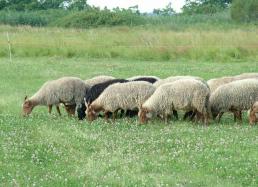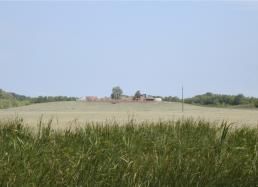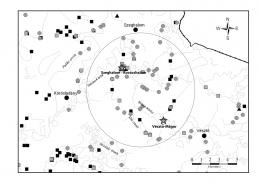Early Settlement Patterns
The relationship between the way ancient societies lived (their settlement types) and how they provided for themselves (their food production) can be complex. Some people lived in settled villages while still roaming the countryside to hunt and gather food. Yet others lived a more mobile lifestyle, although they grew their own food and raised their own domesticated livestock. From Hungary to the Near East, and from North Africa to central Asia, settlement patterns were fairly similar, although the time period for their development differed.
The Rise of Tells
People gradually left behind their hunter-gatherer lifestyles as they established small, scattered farms where families shared resources and responsibilities. Eventually, farming families began to band together into larger groups that lived in close quarters behind the walls of fortified settlements and worked together to care for crops and livestock. These egalitarian communities rebuilt their settlements year after year in the same spot, and as debris built up, a raised hill—a "tell"—formed over time.
From Tells to Cities
Tells gradually grew larger and larger to accommodate concentrated, growing populations. These large tells laid the groundwork for the eventual development of cities—places where people began to specialize in skills beyond farming, where leaders began to rise to power, and where communities began sorting into different social classes.
What environmental and social factors caused people in southeastern Europe to alter their settlement patterns from village, to tell, to city? How did these changes influence the development of complex political and economic concepts such as territorialism, social stratification, and more—processes still at work today? These are some of the questions Dr. Parkinson will try to answer during his expeditions.




